
views
- Place the chicken on a clean cutting board and let it rest for at least 15 minutes before carving.
- Separate the legs (drumsticks and thighs) first, then continue on to the breasts and finish by removing the wings.
- If you hit bone while cutting through a joint, reposition the knife to find a softer path through the connective tissue.
Transfer the chicken to a cutting board.

Lay your roasted or rotisserie chicken breast side-up on a cutting board. Use a cutting board or meat carving board that has grooves along the edges to catch extra juices. If you don’t have one of these, put a baking sheet underneath your cutting board as an alternative. Consider saving the chicken juices to make gravy or another sauce to accompany your meal. Keep paper towels on hand to soak up excess juice and keep your hands dry while you handle your carving knife.
Let the chicken rest for 15 minutes.
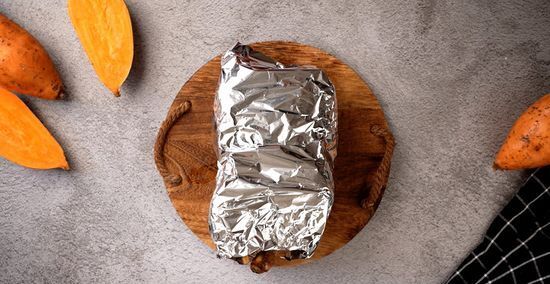
Wait while the chicken redistributes its juices and cools down. Place a tent of tin foil over it to keep it warm while you wait. For a 4 lb (1.8 kg) to 5 lb (2.3 kg) bird, 15 or so minutes is sufficient. For a heavier chicken, wait 20 to 30 minutes. If you purchased a cooked rotisserie chicken, begin carving as soon as you bring it home. If your chicken was trussed (held in position with string), cut the string after resting.
Remove the legs from the body.
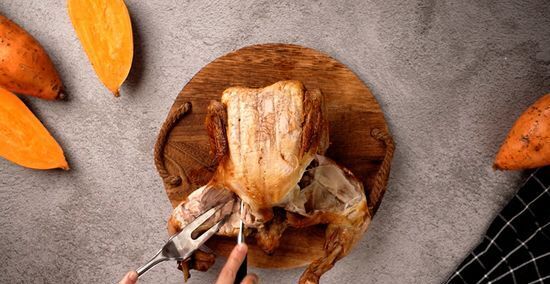
Pull the leg outward and cut through the connective joint. Bend and pull one leg forcefully with your hand or a carving fork until the joint pops apart. Then locate the little pocket of air between the thigh and breast with a carving knife and begin cutting between them, pulling on the leg as you slice. Pull the full leg away with your hand and slice any remaining skin or meat connecting it to the body to separate it. Repeat on the other side to remove the other leg. If you hit bone, reposition your knife closer to the joint and try slicing through again.
Pop out the chicken oysters.

The “oysters” are 2 secret nuggets of meat at the back of the thighs. Not many people know about these—traditionally, they’re enjoyed by chefs as a secret treat. Look for circular shaped pieces of dark meat near where the thighs and backbone meet. Slide them out with your fingers or the tip of your knife and enjoy! It’s hard to find chicken oysters sold by themselves. To make a recipe that requires lots of them, freeze them each time you carve a whole chicken. Chicken oysters are prized for their flavor—since they’re closer to the center of the chicken, they end up slow cooked in the chicken’s fat and roasting juices.
Separate the thighs from the drumsticks.
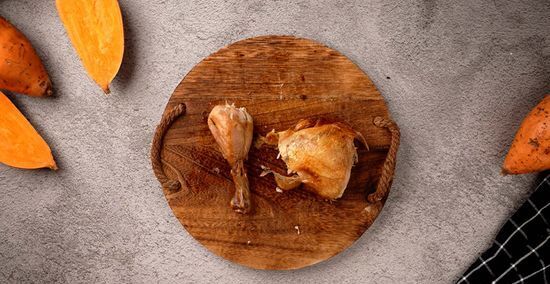
Hold the drumstick and cut away from the thigh through the joint. To locate the joint, move the leg around with your hands and see where it hinges. Then cut through the joint (there shouldn’t be much resistance). If you hit bone, reposition your knife and slice again. Repeat with the other leg.
Slice alongside the breastbone.
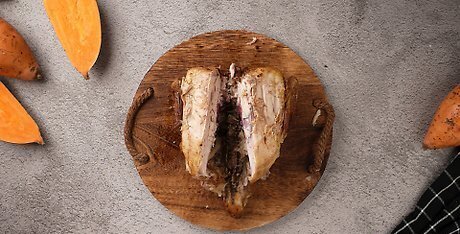
Make a cut with the tip of your knife along one side of the breastbone. Use the inside of the breastbone (also called the keel bone) as a guide. As you cut, gently pull the breast outward with your carving fork or hand. When you reach the wishbone, angle the knife and cut down alongside it into the wing joint. If the chicken is still warm and juicy, the breast will begin sliding off without much pressure.
Remove the breast meat.
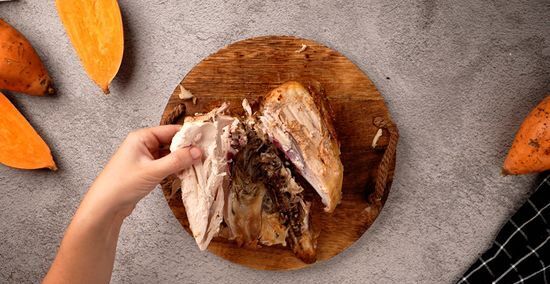
Keep cutting along the breastbone to separate the meat from the ribs. Use short strokes with the tip of the knife to nip at the tissue connecting them. When there’s enough separation, slide the whole breast off the ribs with your hand or carving fork. Keep the skin on top of the breast intact as you disconnect it. Cut along the other side of the breastbone and remove the second breast once the first one is off.
Slice up the breast meat for serving.
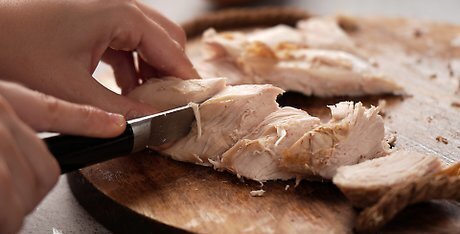
Cut the breasts across the grain of the meat. The thickness of your slices is up to you—consider how many guests you’re serving or what you’re eating alongside your chicken. Consider leaving skin on each slice for presentation (and so each person gets to taste it!).
Remove the wings from the body.
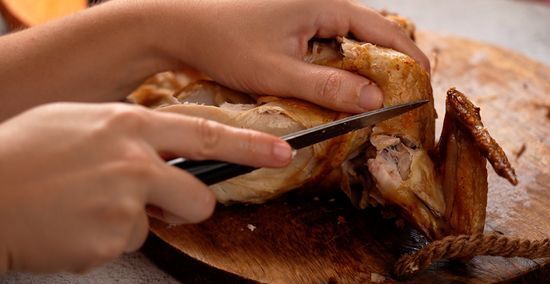
Pull each wing away from the chicken and cut through the joint. If you hit bone or resistance, shift the knife slightly to find the center of the joint. Trim the wing tips off if preferred. To cut roasted chicken wings, separate the wingette from the drumette.
Pick away the remaining meat.
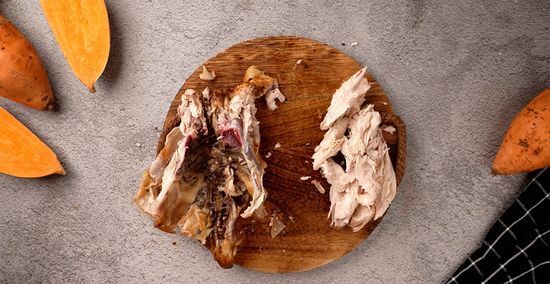
Use your fingers to nab the bits of meat clinging to the chicken bones. It’s rare to get every last bit with a knife, so don’t be afraid to get a little messy to enjoy every last bite! Store these last shreds of meat to make chicken soup, chicken salad, or any other dish you want to add them to. Store leftover cooked chicken in an airtight container. It’ll last for about 5 days in the refrigerator or up to 3 months in the freezer.
Plate your carved chicken and serve.

Place your carved chicken pieces on a large platter or serving tray. Arrange your breast slices in rows with the slices overlapping for a sharp presentation. Display the wings, thighs, and drumsticks alongside the breast so each guest can see your beautiful carving work (and decide which piece they want to eat). Use your carving fork to serve the sliced breast meat and thighs. Drumsticks and wings are usually easier to grab with your hands.
Use the leftover carcass to make chicken stock.

Homemade chicken stock is delicious, nutritious, and free! To make a basic stock, add your chicken carcass, salt and pepper to taste, and your preferred vegetables to a large pot and cover with water. Bring it to a boil, then simmer for 4 hours and strain. Common vegetable additions to chicken stock include celery, carrots, onions, and parsley. Chicken stock made with leftover bones contains iron, collagen, and vitamins from the bone marrow.

















Comments
0 comment